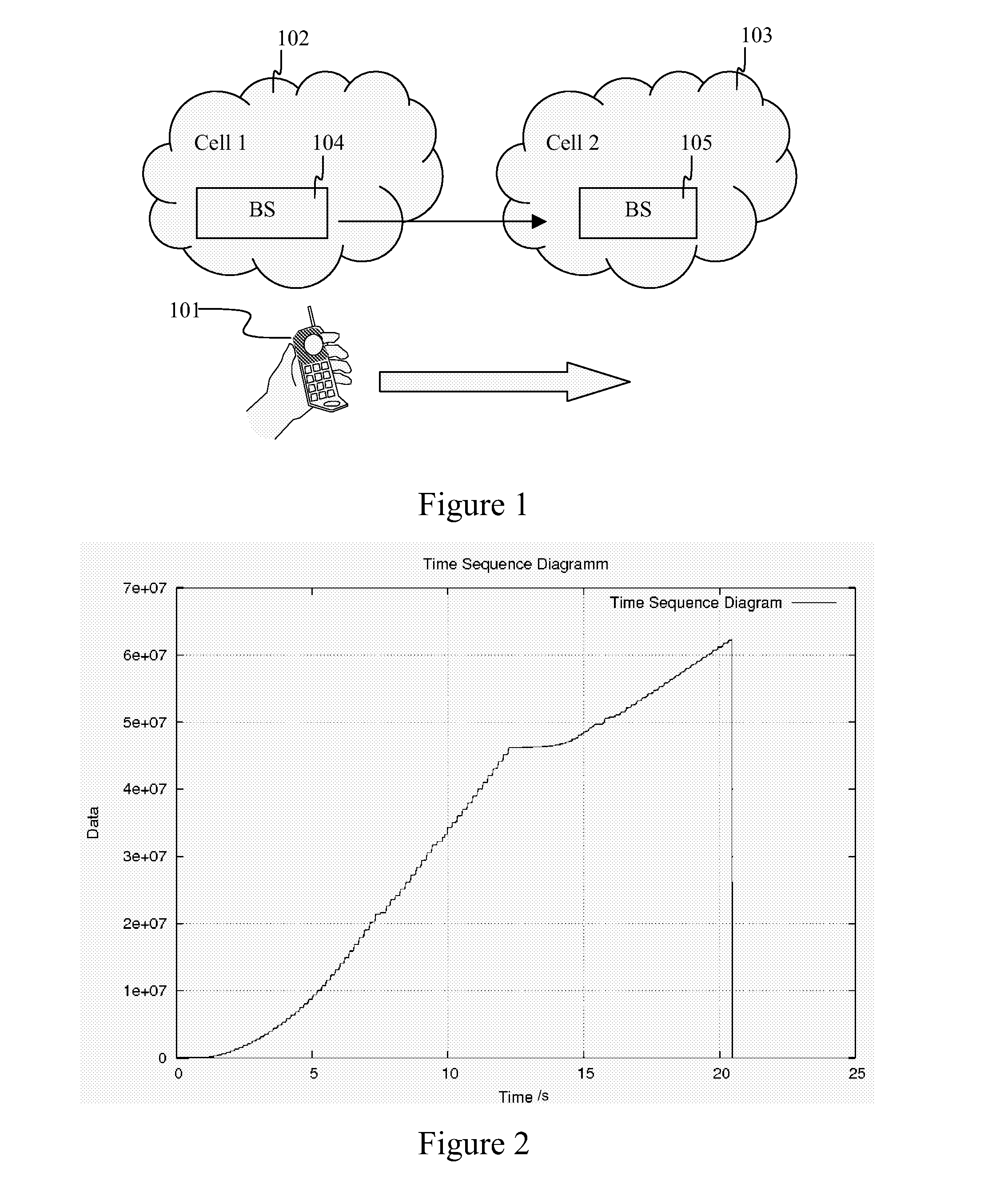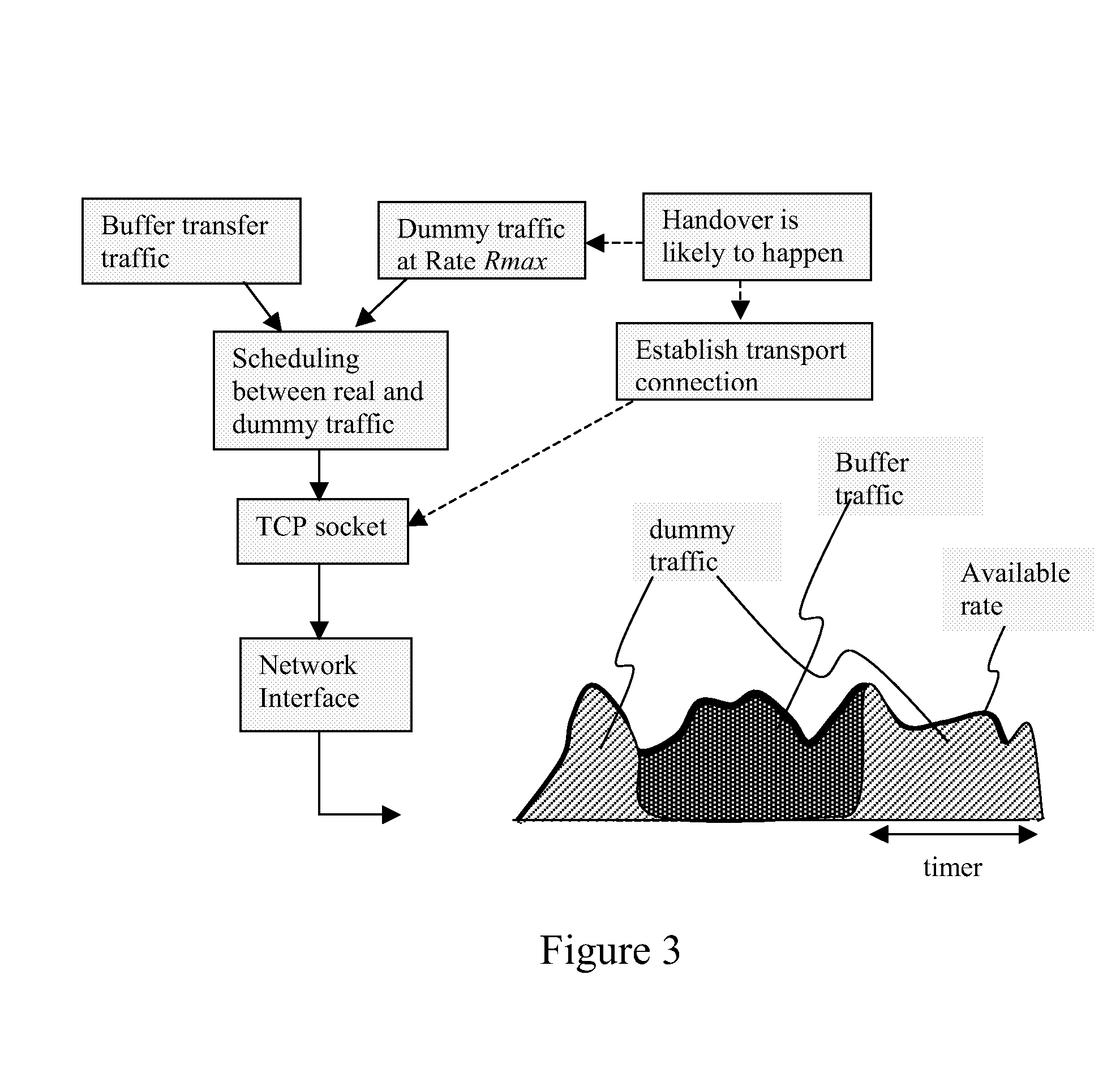Buffer transfer in a communications network
a communication network and buffer technology, applied in the field of buffer transfer in the communications network, can solve the problems of many losses in the transfer, congestion of other connections sharing the same path, and difficulty in estimating the available buffer transfer capacity
- Summary
- Abstract
- Description
- Claims
- Application Information
AI Technical Summary
Benefits of technology
Problems solved by technology
Method used
Image
Examples
Embodiment Construction
[0033]A semi-continuous transport connection is maintained between two nodes that may be involved in a buffer transfer. When a handover between the nodes is likely to occur, as illustrated in FIG. 3, dummy data is sent over the connection to test the data transfer rate, and once the handover occurs the dummy data is replaced with actual buffer transfer data. Once the buffer transfer data has all been sent and acknowledged, dummy data is again sent over the connection to test the data transfer rate.
[0034]The invention requires the following components, as illustrated in FIG. 4:[0035]A transport protocol server (TPS) 401 including a transport protocol stack, a rate-controlled dummy packet sender, a priority setter and buffer transfer control[0036]Transport protocol client (TPC) 402; and[0037]Transport network equipment with standard transport level priority mechanism enabled (e.g., DiffServ)
[0038]In a mobile communications network, each base station acts as a TPS as well as TPC entity...
PUM
 Login to View More
Login to View More Abstract
Description
Claims
Application Information
 Login to View More
Login to View More - R&D
- Intellectual Property
- Life Sciences
- Materials
- Tech Scout
- Unparalleled Data Quality
- Higher Quality Content
- 60% Fewer Hallucinations
Browse by: Latest US Patents, China's latest patents, Technical Efficacy Thesaurus, Application Domain, Technology Topic, Popular Technical Reports.
© 2025 PatSnap. All rights reserved.Legal|Privacy policy|Modern Slavery Act Transparency Statement|Sitemap|About US| Contact US: help@patsnap.com



